CHAPTER SIX
ALL THE KING’S MEN
When the Luftwaffe first deployed its new Me 262 jet bombers to France during the latter stage of the Normandy campaign, it was in very small numbers. They were quickly swept up in the retreat and there were no encounters with Allied fighters. However, as the invasion force pushed north into Belgium in late August 1944 there were occasional sightings, and the first German jet to be shot down fell to P-47Ds of the 78th FG on the 28th as described in Chapter Two. It was during the desperate fighting over the bridges in Holland, which had been audaciously seized in the ill-fated Operation Market Garden in late September, that jets ominously began to be seen.
During the early evening of 26 September, veteran ace Wg Cdr Geoffrey Page, Wing Leader of No 125 Wing, led another patrol to the Nijmegen area. During the course of the mission Flg Off Frank Campbell (who had four victories to his name) of No 132 Sqn, flying Spitfire IX PL257/FF-T, spotted an Me 262 that he chased and managed to damage before it flew off at high speed. Campbell’s close encounter gave the 2nd Tactical Air Force (TAF) its first claim against the Me 262. Two days later, Flt Lt James ‘Chips’ McColl (who was credited with three victories) of Spitfire IX-equipped No 416 Sqn damaged another near Nijmegen, whilst on the 30th No 441 Sqn ace Flg Off Ron Lake, again in a Spitfire IX, also damaged an Me 262.
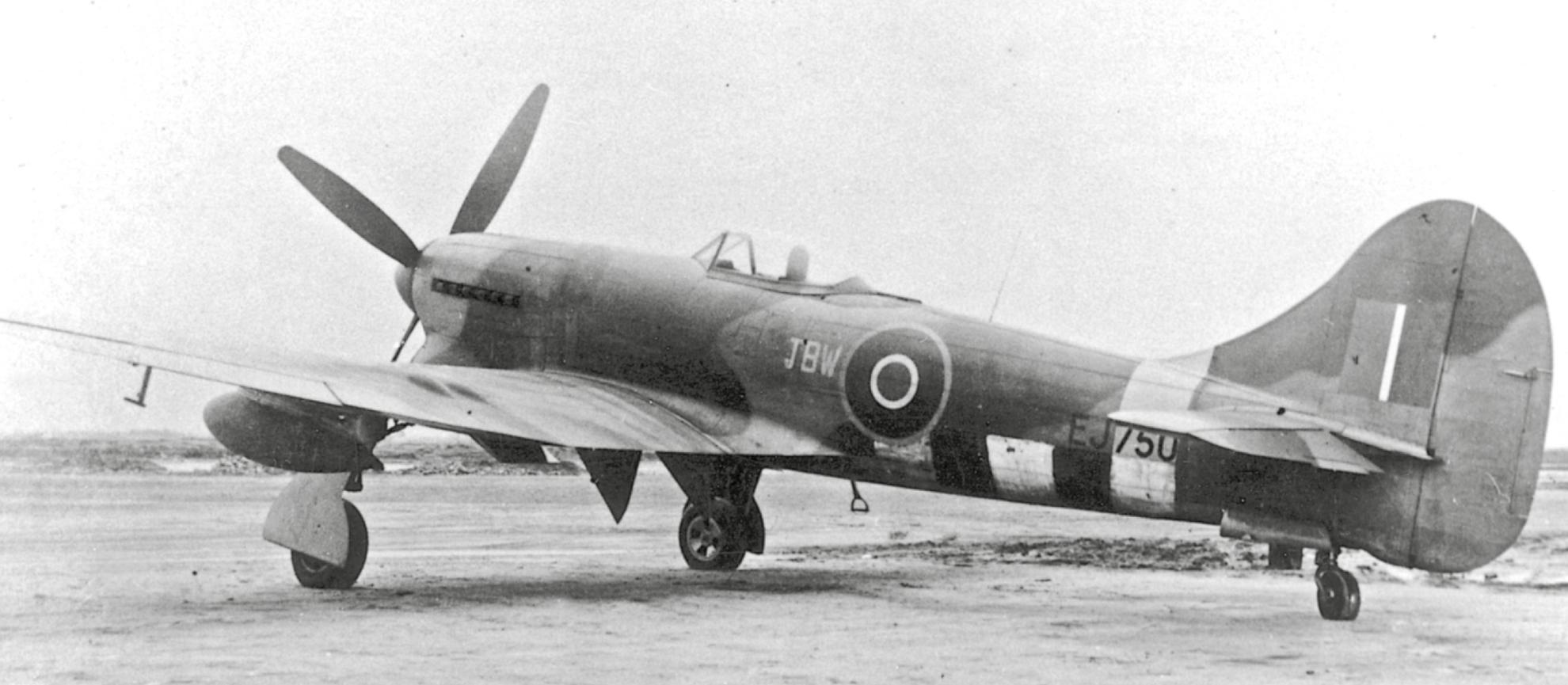
All three of Wg Cdr John Wray’s jet claims came whilst he was flying his personal Tempest V EJ750/JBW. This aeroplane was subsequently written off in February 1945 when its pilot was forced to crash-land after being hit by flak. The fighter had by then been passed on to No 486 Sqn (Chris Thomas collection)
On 1 October the Tempest Vs of No 122 Wing, led by Wg Cdr John Wray, arrived at B80 Volkel, the most forward Allied airfield in newly-liberated Holland. Later that same day pilots from the wing had their first sightings of their new jet-powered foe, and a system of patrols was swiftly established. These proved inconclusive, however, as the Me 262s were easily able to draw away from the Tempest Vs.
During a sweep over Holland four days later, 12 Spitfire IXs (all fitted with the latest gyro gunsight) from No 401 Sqn, led by gunnery expert and 13-victory ace Sqn Ldr Rod Smith, were near Nijmegen when, at 1430 hrs, they spotted a Me 262 from 5./KG(J) 51 flown by Hauptmann Hans-Christoph Buttmann. Several of the Spitfires attacked, as Smith wrote later;

Whilst leading Spitfires of No 401 Sqn on 5 October 1944, Sqn Ldr Rod Smith helped shoot down the first Me 262 to fall to a Commonwealth unit. His quarter-share in the jet’s demise proved to be the Malta ace’s final claim (DND)
‘I sighted an Me 262 coming head on 500 ft below. He went into a port climbing turn and I turned to starboard after him, along with several other Spitfires. He then dived down towards the bridge, twisting and turning and half-rolling at very high speed. He then flew across Nijmegen, turning from side to side. I saw a Spitfire get some strikes on him and he streamed white smoke from the starboard wing root. He flew on at very high speed still, and I managed to get behind him and fire two three-second bursts from approximately 200-300 yards. He zoomed very high and I saw strikes on him in the port and starboard nacelles. A small fire started in the starboard nacelle and a big one in the port nacelle while I was firing. I broke down to starboard under him and he turned down to starboard behind me. I thought at the time he was trying to attack me, even though in flames. He passed behind me and crashed in a field southwest of Nijmegen.’
Other pilots from Smith’s section had also attacked Buttmann’s jet, including Flg Off John MacKay, a future 13-victory ace, Flg Off Gus Sinclair, who claimed the Me 262 as his fourth, and last, success, Flt Lt Hedley ‘Snooks’ Everard, who was already an ace, and Flt Lt Robert ‘Tex’ Davenport, for whom the ‘share’ took him to acedom. More significantly, Buttmann’s Me 262 was the first jet to be shot down by a Commonwealth squadron.
Tempest V pilots were also increasingly seeing Me 262s along the German border with Holland, and on 13 October V1 ace Plt Off Bob Cole of No 3 Sqn claimed the first jet victory for the Hawker fighter. Whilst flying north of Aachen in JN868, he spotted the Me 262 flown by Unteroffizier Edmund Delatowski of 3./KG 51 and dived on the unsuspecting jet. Despite coaxing his fighter up to 480 mph, Cole was unable to close the distance. However, Delatowski’s jet then inexplicably slowed, and the RAF pilot took his chance;
‘I closed in to about 500 yards and fired one short burst, dead astern, which missed. I closed in to about 150 yards, still dead astern, and fired another short burst. The enemy aircraft immediately exploded just as a doodlebug does and many pieces flew off, including what looked like a plank six feet long.’
The injured Edmund Delatowski somehow managed to bail out.
That same day Flt Lt Tony Seager (who would be credited with two victories) damaged an Me 262 over Grave, in Holland, for No 80 Sqn’s first claim against a jet. These were, however, isolated successes, although 2nd TAF fighters often forced the jets to jettison their bombs and turn back. In order to increase its pilots’ chances of success, No 122 Wing decided to have a small number of manned Tempest Vs on standby at Volkel, ready to scramble for the jets’ bases so as to catch them at their most vulnerable when approaching to land short of fuel at mission-end. In response, the Luftwaffe positioned ‘flak lanes’ around its airfields and mounted its own defensive patrols with Fw 190s and Bf 109s.
During one such airfield patrol on 3 November, the No 122 Wing Leader Wg Cdr Wray, in his personal Tempest EJ750/JBW, spotted two Me 262s flying southwest whilst he was at 18,000 ft. On sighting him, the enemy pilots turned back. Wray, using his height advantage, dived after the right-hand jet, and, closing at high speed, opened fire ‘before he got out of range. Suddenly a large piece flew off the aircraft and he flicked over on to his back and disappeared downwards into cloud in an inverted position. I followed, but the thickness of the cloud made it impossible for me to maintain contact’. Although John Wray claimed the Me 262 as damaged, Oberfähnrich Willi Banzhoff of Kommando ‘Nowotny’ crashed near Hittfeld and was killed. That same day other patrols strafed and damaged jets on their airfields near Osnabrück, such as Rheine and Bramsche.
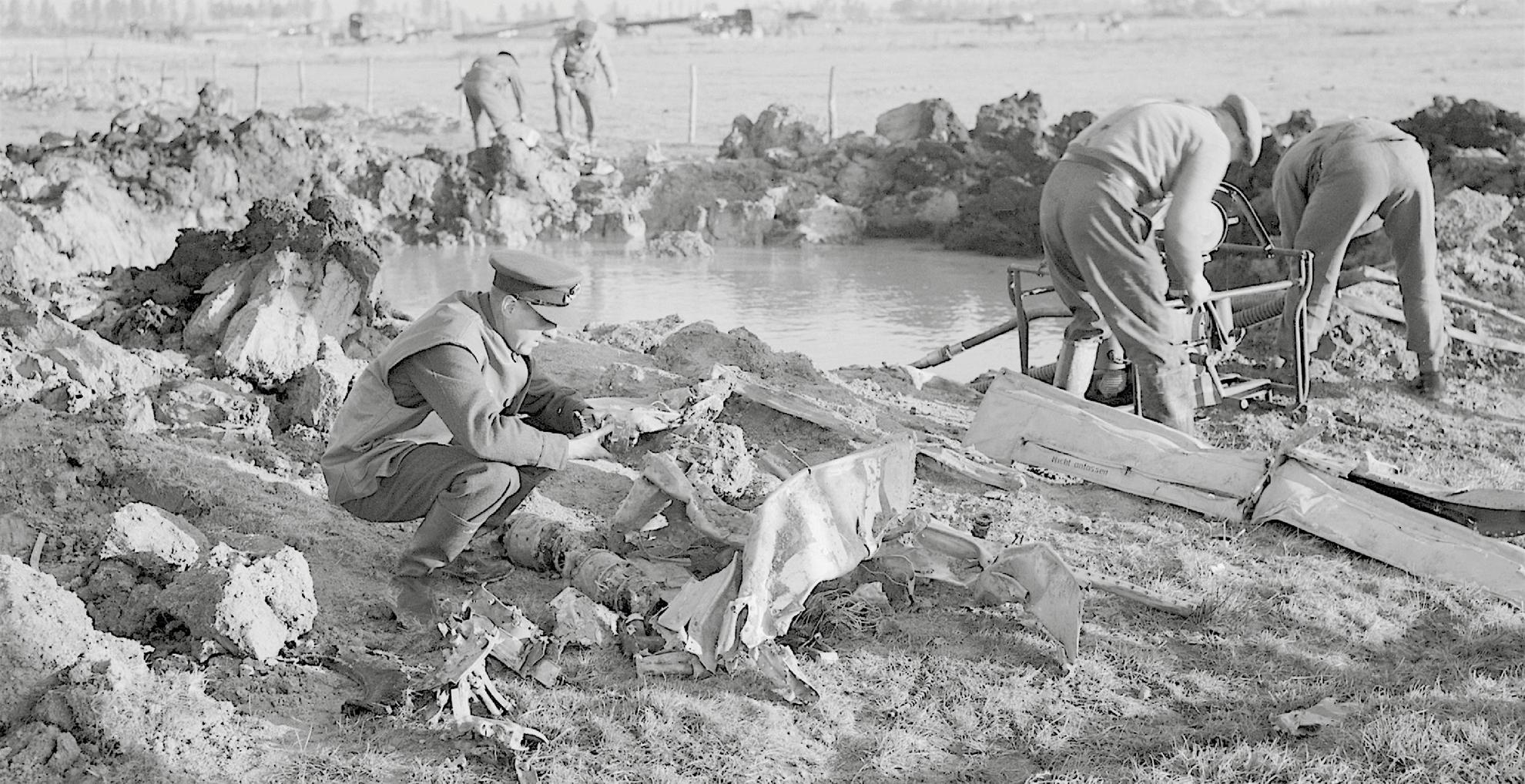
RAF intelligence staff sift through the shattered wreckage of Hauptmann Hans-Christoph Buttmann’s Me 262 five miles northeast of Nijmegen. The personnel on the right have rigged up a pump in an attempt to drain the water-filled crater created by the 5./KG(J) 51 machine when it crashed (© IWM CL 1350)
By now the Luftwaffe was increasingly using the Me 262 as a defensive fighter, rather than as a bomber, resulting in some of the daylight raids by Bomber Command Lancasters and Halifaxes being intercepted by them – such as on 27 November when Spitfire IXs of No 1 Sqn escorting a Lancaster raid on Dortmund spotted jets for the first time. Tempest V pilots also engaged more jets in early December, the first of these encounters occurring on the 3rd when Flt Lt John ‘Judy’ Garland of No 80 Sqn spotted an aircraft flying at low level whilst he was attacking a train near Rheine;
‘I identified it as an Me 262. I closed to 400 yards and the Hun turned sharply to port, climbing to approximately 150 ft. The jet then appeared to do a high-speed stall, followed by a complete flick roll. As he straightened up, the cockpit hood flew off. Closing to 150 yards, I fired one one-second burst but saw no strikes. The enemy aircraft immediately went into a flat spin to port and crashed into a small wood.’
The Me 262 was from I./KG(J) 51, and its pilot, Knight’s Cross holder Oberleutnant Hans-Joachim Valet, was killed. Garland would subsequently claim an additional three victories before VE Day.
Flying from B88 Heesch five days later (8 December), No 442 Sqn pilots on an armed reconnaissance mission over enemy territory optimistically chased a trio of Me 262s in their Spitfire IXs but were unable to catch them. However, on the 10th, No 56 Sqn’s Flt Sgt Jackson attacked Leutnant Walter Roth’s Me 262 Wk-Nr 170281 of I./KG(J) 51 in his Tempest V, claiming the aeroplane as damaged when, in fact, the jet crash-landed.
One week later, Wg Cdr John Wray attacked his second Me 262 when, on the morning of the 17th, he was warned of jets in the area and sighted two aeroplanes from 11./KG(J) 51 near the River Rhine. Ordering his wingman after the No 2, he pursued Me 262A-2a Wk-Nr 110501/9K+BP flown by Leutnant Wolfgang Lübke, who was at low level. The No 122 Wing Leader subsequently wrote;

The Wing Leader of Tempest-equipped No 122 Wg was Wg Cdr John Wray, whose only air combat successes were both against German jets. Although he was awarded a damaged claim following his first encounter with a Messerschmitt jet on 3 November 1944, he had in fact shot the Me 262 down. Wray was credited with destroying his second Me 262, on 17 December, however. Finally, Wray damaged an Ar 234 on Christmas Day, this aeroplane also being wrecked in the subsequent crash-landing (Chris Thomas collection)
‘I was going flat out at about 450 mph, but losing ground. He was about 200 yards ahead, but drawing away. The visibility was not too good at the time, and I realised that I might lose him. I opened fire, and fired about a four-second burst, but with no apparent results. I had hoped to at least get him weaving. Then he started to turn slowly, so I set off again. By this time he was right on the deck, and I was slightly above him, and found that I was catching him up. I opened fire again, and there appeared to be strikes on the wings. He started to weave violently, which was not too clever at that altitude, but this allowed me to close to about 300 yards. I was about to fire again when his port wingtip hit a building on the edge of the Rhine and he pitched straight into the river.’
This was Wray’s second success against a jet in six weeks, his victory coinciding with the German offensive in the Ardennes that saw a spike in enemy air activity and increasing encounters with jets whenever the dreadful winter weather allowed. An improvement in conditions saw aerial action continue over the Christmas period, which resulted in some rewarding ‘presents’ for several units.
At midday on Christmas Day, Spitfire IXs of No 411 Sqn were flying in support of US ground forces around Bastogne, in Belgium, when the engine in the aircraft of Flt Lt Jack Boyle’s wingman began misfiring. Both pilots duly broke off from the rest of the unit and headed back to Heesch. As they approached the airfield Boyle spotted an Me 262 beneath him. He dived and, with his speed registering in excess of 500 mph, opened fire and hit one of the jet’s engines;
‘He immediately dived for the deck as an evasive tactic, but with only one engine he couldn’t outrun me. I scored several more hits before he clipped some tall tree tops and then hit the ground at an almost flat angle. His aircraft disintegrated in stages from nose to tail as it ripped up the turf for several hundred yards until only the tailplane assembly was left, and it went cartwheeling along just below me and at about my speed. Fire and smoke marked his trail.’
Oberleutnant Hans-Georg Lamle of I./KG(J) 51, who had just bombed Allied forces in the Belgian city of Liège, was killed. His demise gave Boyle the second of his six victories.
Several hours later, Spitfire XVIs from No 403 Sqn, led by Sqn Ldr Jim Collier, were out for a patrol over Malmedy, in Belgium, when they came across a Kette of three Me 262s flying in large circles southwest of Aachen, on the German border. As the Spitfires approached, two of them made off under full power, but the third continued circling, apparently unaware of the impending threat. As Collier came within range he opened fire, observing strikes on one wing. The enemy pilot then attempted to escape, but Collier maintained his position and continued to fire, seeing white smoke beginning to stream from the Me 262’s left engine. The jet then slowly rolled on to its back and its pilot, Feldwebel Hans Meyer of I./KG(J) 51, bailed out before his aeroplane crashed. Collier’s notable victory was his fifth claim, of which three were aircraft destroyed.
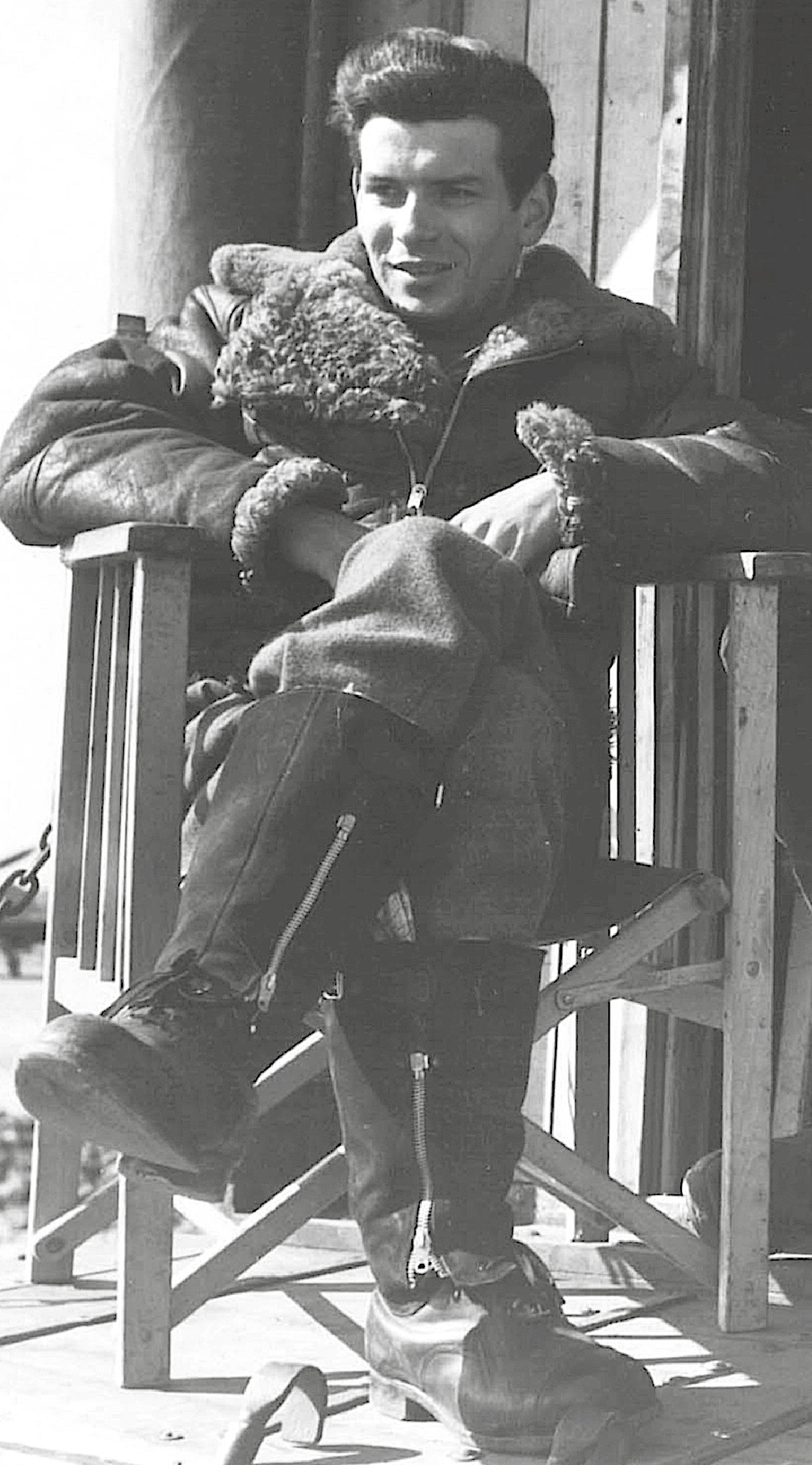
Future six-victory ace Flt Lt Johnny Boyle of No 411 Sqn shot down the Me 262 of I./KG(J) 51’s Oberleutnant Hans-Georg Lamle on Christmas Day after shepherding his wingman back to B88 Heesch (PAC)
At the same time as Collier was scoring his final kill, eight Tempest Vs of No 486 Sqn were patrolling nearby, and Flt Lt Jack Stafford, a V1 ace, made his first step to acedom against manned aircraft when he too spotted an Me 262;
‘I broke up towards him and commenced firing at extreme range. I maintained my fire up to about 400 yards, and I saw pieces fall away from his port unit. As the enemy aircraft passed overhead, several red balls fell from it and he was slowed considerably. I fired and it commenced diving, leaving a trail of white smoke. He then rolled on his back and I saw the pilot bail out, observing that his parachute did not open properly.’
Stafford’s No 2 was fellow V1 ace Plt Off Duff Bremner, who also attacked the jet;
‘I got into line astern and fired a two-second burst from 600 yards, and this time saw streams of white vapour coming from his port unit. I fired another burst from line astern – this time at 800 yards. The Me 262 increased his angle of dive, rolled onto its back and the pilot bailed out.’
Both Tempest V pilots were credited with a shared victory each, although the similarity of their reports with that of Sqn Ldr Collier’s leaves the possibility that all three had attacked the unfortunate Meyer, with both the Canadians and New Zealanders being unaware of each other’s presence. Either way, both units were able to celebrate a successful Christmas.
German jets were also encountered on Boxing Day as the dangerous German Ardennes offensive ground to a halt in the snow. The CO of Spitfire XVI-equipped No 127 Sqn, ace Sqn Ldr Ralph ‘Sammy’ Sampson, spotted some near Enschede, in Holland, but his frustration at being unable to catch them was evident in his mission report;
‘There were some jet jobs reported and then we saw four Me 262s, but we had no hope of catching them. I had a long range squirt from 1500 yards, but more in desperation than with any sense of hitting one.’
However, near the border town of Julich, Flt Lt Elgin ‘Irish’ Ireland of Spitfire IX-equipped No 411 Sqn managed to damage an Me 262 (his remaining three claims were for victories), as, in mid-afternoon, did the No 135 Wing Leader Wg Cdr Ray Harries in his Spitfire IX – the ‘damaged’ was the last claim for the 16-victory ace.
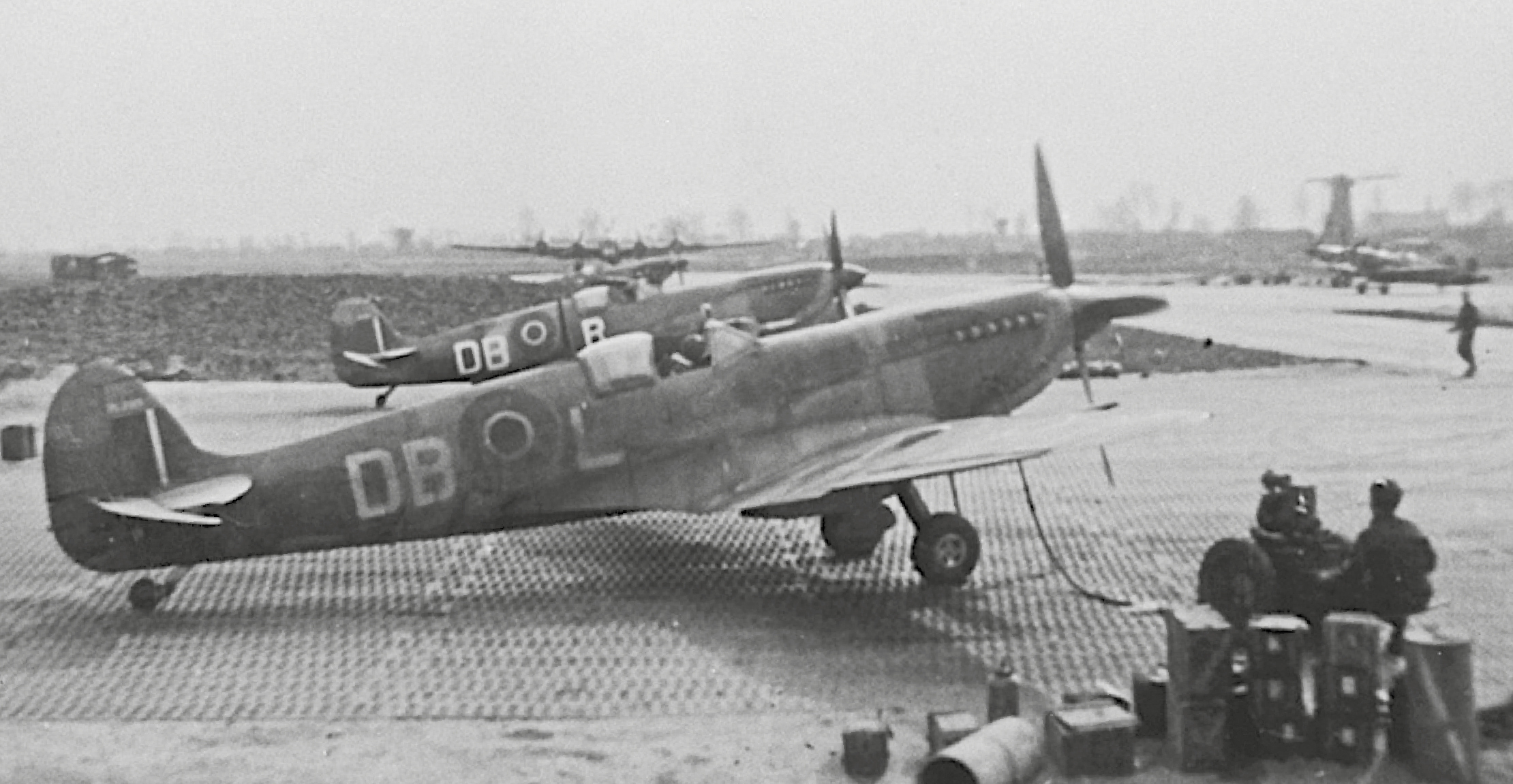
Flt Lt Johnny Boyle was flying Spitfire IX MK686/DB-L of No 411 Sqn on Christmas Day 1944 when he shot down Oberleutnant Lamle’s Me 262 (PAC)
‘The New Year started with a bang.’
Thus, with something of an understatement, did No 401 Sqn’s diarist begin the entry for 1945 as its base at Heesch came under aerial attack at dawn. Operation Bodenplatte was a massive, but ultimately costly, Luftwaffe attack on Allied airfields that resulted in a day of heavy fighting. The valuable jets were not involved, however, and having achieved acedom earlier in the day, recently promoted Flt Lt John MacKay of No 401 Sqn led a section in an anti-jet ‘Rat Hunt’ to Rheine airfield at 1535 hrs. Several more piston-engined fighters were duly claimed, and MacKay and his wingman, Flt Sgt A K Woodill, also damaged a jet. The latter was spared, however, when MacKay’s cannon jammed and his wingman ran out of ammunition.
It was not only tactical fighters that encountered the Luftwaffe jets, whose performance meant they were ideal for chasing high-flying Mosquito and Spitfire reconnaissance aircraft. During the early afternoon of 14 January, a Spitfire PR XI of No 16 Sqn being flown by Flg Off W F ‘Barry’ Barker on a reconnaissance mission of the Dusseldorf area was intercepted by an Me 163 Komet. Barker evaded so violently that he believed the fighter crashed.

Tempest V EJ523/SA-D was the mount of New Zealand V1 ace Plt Off Duff Bremner of No 486 Sqn when he shared in the destruction of an Me 262 near Aachen on Christmas Day 1944. EJ523 did not survive the war, being wrecked in a crash landing on 25 February 1945 (Chris Thomas collection)
That same day the Jadgwaffe suffered a crippling defeat, losing almost 200 aircraft to USAAF and RAF escort fighters during daylight bombing raids. 2nd TAF fighter sweeps also took a toll. During a sweep by the Norwegians of Spitfire IX-equipped No 132 Wing, among the fighters they encountered near Rheine were at least five Me 262s. One of these was shot down by Capt Kåare Bolstad of No 332 Sqn for his second victory. It also proved to be the only jet shot down by a Norwegian pilot. A little over a week later, on 23 January, further heavy fighting with the Luftwaffe resulted in a rich harvest of jet claims for 2nd TAF units. During a mid-morning sweep by No 401 Sqn, its CO, and ace, Sqn Ldr Bill Klersy was leading his unit over an airfield north of Osnabrück when he spotted jets taking off from nearby Bramsche. Initially identified as Me 262s, the Spitfire pilots dived to attack, as the squadron diarist noted;
‘Such a target is not very often seen, so after broadcasting the news to any other squadrons that happened to be in the vicinity, they immediately attacked. When the smoke had cleared and the squadron had returned to base to tally up the score, they found that three Me 262s had been destroyed and six damaged. One jet job crashed while trying to take off, so this was also claimed as a damaged.’
In fact the jets were Ar 234s of III./KG 76, and those destroyed fell to Flg Off Don Church for his third victory, Flg Off William ‘Bud’ Connell for his fourth success and Flg Off G A Hardy for his only aerial kill. Three others were damaged, including one by the CO. No 401 Sqn then strafed the airfield, claiming five Arado bombers damaged, with five-victory ace Flt Lt Frederick Murray claiming two and one shared.

The only Norwegian pilot to shoot down a jet was Capt Kåare Bolstad of No 332 Sqn, who destroyed an Me 262 on 14 January. He was promoted to command his squadron soon afterwards, but on 3 April he was shot down by flak and killed whilst strafing near Zwolle, in Holland (Bengt Stangvik)
Whilst this mayhem was happening Tempest Vs from No 56 Sqn were out on patrol, and near Achmer Flt Lt Frank MacLeod and Flg Off Ron Dennis came across an Me 262 at low level that they shot down. The former described the first of his four victories;
‘We kept slightly below the Hun – the enemy aircraft was jinking slightly and we took advantage of this to close the range. The enemy aircraft was identified as an Me 262. The latter made a gentle turn to port, giving us an immediate advantage, and by cutting across the turn we closed to 150 yards. I fired a short burst with an angle off of approximately 30 degrees to port with no apparent effect. Still turning slightly with the Me 262, I increased deflection to about 40 degrees and fired, observing strikes immediately – I held my fire for about three seconds. My strikes were on the centre of the fuselage and on the tail unit – I saw flames and ceased firing. I broke away and next observed the enemy aircraft attempting to make a forced landing, with the fuselage and starboard jet on fire. He overshot the field in which it appeared he was going to land. After his tail unit had hit the ground the aircraft lifted and nosed into the next field, where it exploded.’

On 23 January 1945, whilst at the controls of ML141/YO-E, Flg Off Don Church of No 401 Sqn was on a sweep when he spotted jets taking off from Bramsche. They turned out to be Ar 234s of III./KG 76, and diving in, Church sent one of the aeroplanes crashing to its destruction for his fifth claim, three of which were destroyed. Seen here taxiing out at B88 Heesch in March 1945, ML141 fell victim to light flak on 25 April – its pilot bailed out (PAC)
Shortly afterwards Spitfires of No 411 Sqn flew an armed reconnaissance towards Lingen and Münster. At 1215 hrs Flt Lt Dick Audet attacked Rheine airfield, where, on a single pass, he strafed and destroyed an Me 262. Minutes later he spotted a jet in the air a few miles north of Rheine, and promptly shot it down. His victim is believed to have been Unteroffizier Kubizek of 4./KG(J) 51, and his demise provided Audet with his 11th, and last, victory. The following morning (24 January), near Münster, he damaged another Me 262.
Almost three weeks would pass before another German jet was engaged in the air, this time by ace Sqn Ldr David Fairbanks, the newly appointed CO of No 274 Sqn. He was leading a flight of eight Tempest Vs on an armed reconnaissance when he spotted a jet and chased it through the scattered clouds for more than 20 miles;

During a remarkable sortie on 23 January 1945 No 411 Sqn ace Flt Lt Dick Audet shot down an Me 262 (for his his 11th, and last, victory) and damaged another on the ground when he strafed Rheine airfield. He caught another Me 262 in the air the next day at Münster and damaged it too (DND)
‘I came through a small patch of cloud and saw the enemy aircraft about 800 yards dead ahead at approximately 1500 ft over Rheine airfield. He was just dropping his nose wheel and started to turn to starboard. I dropped my tanks on seeing the airfield and closed to approximately 250-300 yards and placed my bead on his starboard turbo [engine) and slightly above, firing a half-second burst to test my deflection. The enemy aircraft went straight down immediately and blew up in the centre of Rheine airfield.’
Although initially identified as an Me 262, his victim was in fact an Ar 234B of reconnaissance unit 1(F)/123, the jet being flown by Hauptmann Hans Felden. The next successes against jets were not long in coming.
On 14 February a No 416 Sqn patrol spotted eight Me 262s escorting an Ar 234, but as the unit diary wistfully stated, ‘they proved bashful and the enemy pilots opened up the burners and pulled away into cloud cover’. However, others were more fortunate, as early in the morning, attracted by covering fighters over Rheine, the formidable Griffon-engined Spitfire XIVs of No 41 Sqn had their first engagement with Me 262s when, diving through the covering Fw 190Ds, Flg Off Eric Gray and WO Vivian Rossow each damaged a jet.

Audet’s aircraft when he made his jet claims was Spitfire IX RR201, although it may have been coded DB-G at the time – the fighter was later recoded DB-R (PAC)
A significant number of Me 262s had been on sorties that day, their pilots being tasked with attacking Allied troops advancing on the heavily fortified Siegfried Line along the Dutch-German border. Two of these aircraft (from 5./KG(J) 51) were shot down by No 439 Sqn pilots Flt Lt Lyle Shaver and Flg Off Hugh Fraser in their Typhoons for their third and fourth victories, respectively. Fraser brought down Feldwebel Werner Witzmann, while Shaver’s Me 262 was being flown by Oberleutnant Hans-Georg Richter. Within minutes Capt Freddie Green of No 184 Sqn, in another Typhoon, spotted a pair of jets near Arnhem and, finding himself astern of one of them, was able to open fire and damage it. This was the first claim made by a South African Air Force pilot against a jet.
Then, shortly before dusk, Australian ace Flt Lt Tony Gaze was flying a Spitfire XIV of No 610 Sqn over the German town of Kleve, on the Dutch border, when he saw some jets. After unsuccessfully chasing several Ar 234s, he spotted three Me 262s;
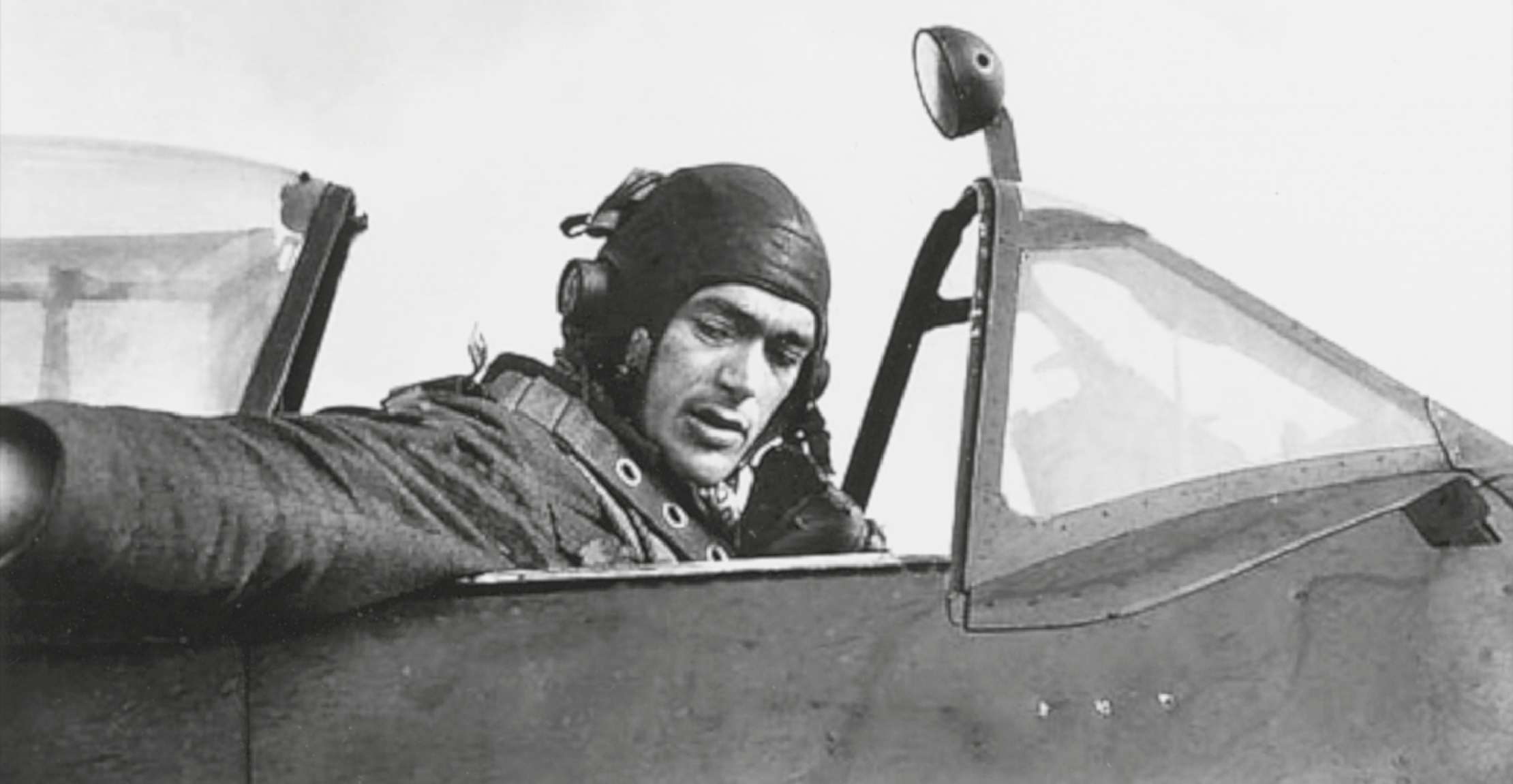
Australian ace Flt Lt Tony Gaze, flying Spitfire XIVs with No 41 Sqn, destroyed an Me 262 on 14 February and shared in the destruction of an Ar 234 on 12 April. In the closing days of the war he also briefly saw an He 162 in formation with an Me 262 (Tony Gaze)
‘I dived down behind them and closed in, crossing behind the formation, and attacked the port aircraft which was lagging slightly. I could not see my sight properly as we were flying straight into the sun, but fired from dead astern, at a range of 350 yards, hitting it in the starboard jet [engine] with the second burst – at which point the other two aircraft immediately dived into cloud. It pulled up slowly and turned to starboard and I fired, obtaining more strikes on the fuselage and jet, which caught fire. The enemy aircraft rolled over onto its back and dived through cloud. I turned 180 [degrees] and dived after it, calling on the R/T to warn my No 2. On breaking cloud I saw an aircraft hit the ground and explode about a mile ahead of me.’
The first jet shot down by a Griffon-engined Spitfire was an Me 262A of 3./KG(J) 51 flown by Feldwebel Rudolf Hoffmann, who was killed.
There were several more encounters with jets for 2nd TAF fighters during the rest of February, although these only resulted in several ‘damaged’ claims. Fighter Command’s Mustang-equipped long-range escort units were also occasionally encountering jets whilst escorting daylight raids by Bomber Command. On 21 February Flg Off Jan Borowczyk of No 315 Sqn reported spotting what was almost certainly an Me 163;
‘I caught sight of a single strange looking German aircraft proceeding to the east at about 15,000 to 16,000 ft. He did not see me yet and my heart jumped when I realised that this was probably the new German jet fighter ME 163, which I saw below. All I could think of now was what it would mean if I managed to shoot down the first of these planes to add to the high reputation of my Squadron. Thinking this way, I gathered all the speed I could, attempting to close up and to fall unexpectedly on the German. Alas, the German pilot was alert enough to spot an enemy fighter hurtling down in his direction. I was still at least some 1500 ft away from him when his aircraft gave off a puff of white smoke and started to move away with astounding acceleration.’
The first big encounter between Fighter Command Mustang IIIs and German jets came on 23 March when an attack by 100 Lancasters on Bremen was intercepted by around 20 Me 262s. Southwest of the target, Flg Off Albert Yeardley, who had only recently joined No 126 Sqn, put a well-aimed burst into one and the Me 262 went straight in, giving him credit for the first jet shot down by an RAF Mustang – this was also Yeardley’s third, and last, victory. Also engaged was No 118 Sqn, led by Flt Lt Paddy Harbison, and he claimed one damaged, as did five-victory ace Flt Lt Mike Giddings;
‘As we turned to rejoin the bombers I dived on another ME 262, which was turning below me, and I fired a two- to three-second burst from 700 down 500 yards, seeing a couple of strikes and part of the starboard wing root fly off. It was impossible to close the range to these attackers.’

On 9 April Flt Sgt Toni Murkowski was part of a bomber escort to Hamburg when No 309 Sqn engaged a group of Me 262s. He duly claimed one of the four jets that were shot down, which were amongst the final Polish victories of the war – he also damaged a second jet (Toni Murkowski)
Giddings, who later became Air Marshal Sir Michael Giddings, fired 60 rounds from his four guns.
Over the next few weeks the escort fighters engaged jets on a regular basis, and on the 31st more were encountered near Hamburg. This time they could not be caught, however, as Flg Off Bill Fleming of No 154 Sqn recalled;
‘South of the target I noticed some vapour trails several thousand feet above us going down in the same direction. Shortly afterwards I observed several Me 262s diving through our formation from above and behind, travelling at high speed. We dropped our tanks and dived on the 262s, but before getting within range they opened fire on the leading bombers with what looked like rocket projectiles and cannon, scoring hits on at least two of the bombers. One of the 262s, breaking away from the attack, came back under us at high speed. We opened fire at extreme range before he pulled away with his superior speed.’
Albert Yeardley was more successful and damaged one of them.
However, things improved on 9 April during another raid on Hamburg when Polish No 133 Wing, led by six-victory ace Wg Cdr Kazimierz Rutkowski, shot down four. Sqn Ldr Józef Żulikowski, CO of No 306 Sqn, shot down one 15 miles west of the target for his third, and final, victory, whilst Flt Lt Mieczysław Gorzula and Flt Lt Jerzy Mencel of No 309 Sqn claimed an Me 262 each. A fourth fell to No 309 Sqn’s Flt Sgt Toni Murkowski, who also damaged another. He told Andrew Thomas;
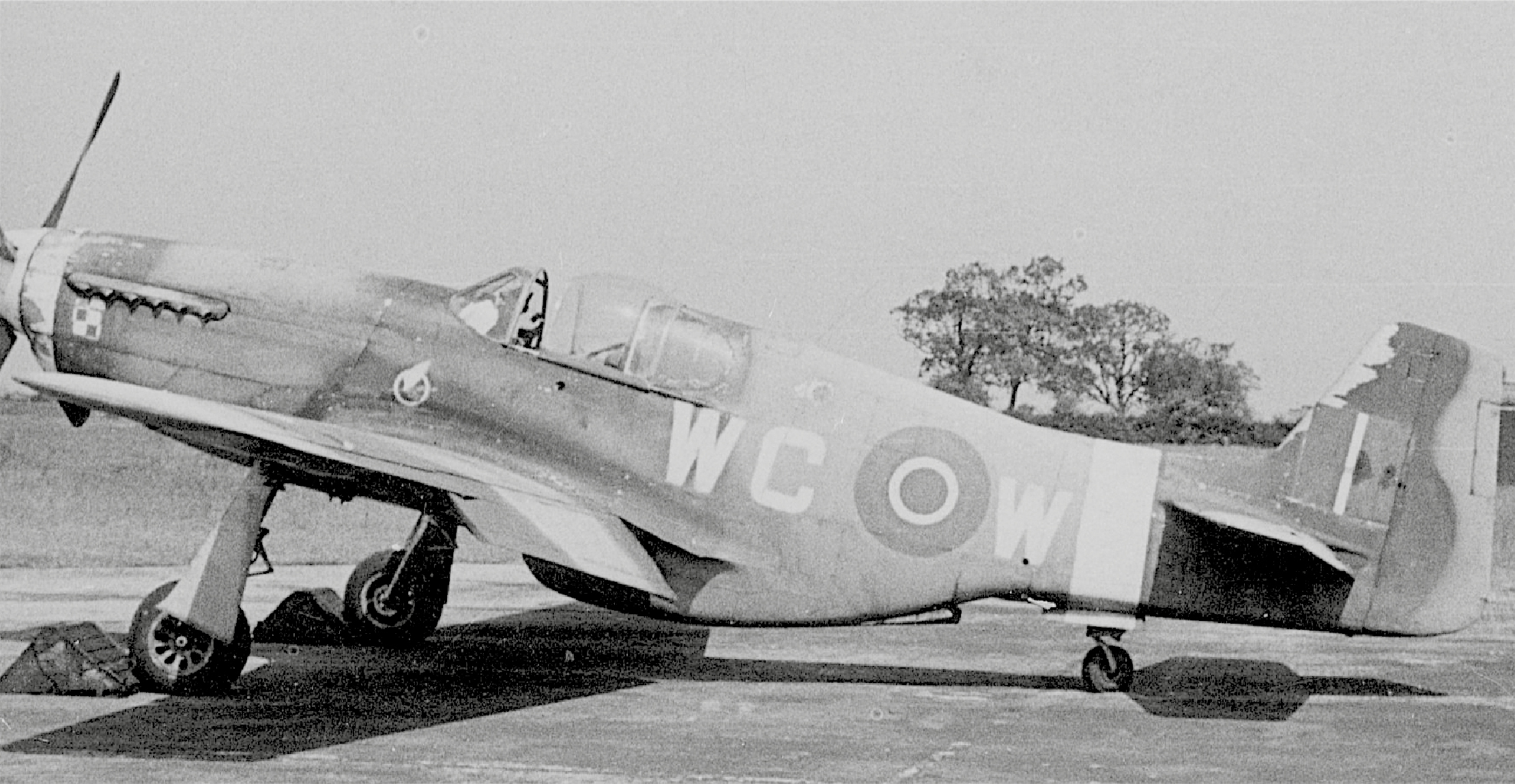
Toni Murkowski was flying Mustang III FB385/WC-W over Hamburg when he achieved his jet victory on 9 April (Toni Murkowski)
‘During this raid on Hamburg we were off on the right, and suddenly the jets appeared from behind. I was in a turn and managed to slip behind one – gaining in speed, I opened up when I got to within 200 yards behind a jet. I could see bits flying off the engine and perhaps the flaps came off and he just dived in from about 20,000+ ft. I then caught another. The 262s were much faster than the Mustang, and if they had just gone straight I’d never have caught them. I later met an air gunner from one of the Lancasters who showed me a photo of a Mustang diving through the bombers, and when we compared log books it was of me chasing the first 262!’
The following afternoon 200 Lancasters attacked Leipzig, and as the pathfinder indicators went down a No 405 Sqn Lancaster flown by Sqn Ldr Campbell Mussells was attacked by a Komet, whose fire shot away the rear turret and caused other damage. Pilots of several Mustang squadrons reported sighting Me 163s, and Flg Off John ‘Slops’ Haslope of No 165 Sqn spotted the rocket fighter that attacked Mussells’ aircraft. He ‘firewalled’ his throttle and dived after it;
‘I noticed a bomber begin to smoke and something appeared to fly off it. This resolved itself into an Me 163, which climbed vertically at great speed. The Me 163 turned towards me and I had a shot at him in a right hand turn, range about 900 yards and 30 degrees’ deflection, but observed no strikes. The Me 163 then spiralled into a vertical dive, which I followed, firing several bursts of about two to three seconds, observing strikes on four occasions on the wing roots and several small pieces came off. The Me 163 continued on down and was observed to hit the ground and explode.’
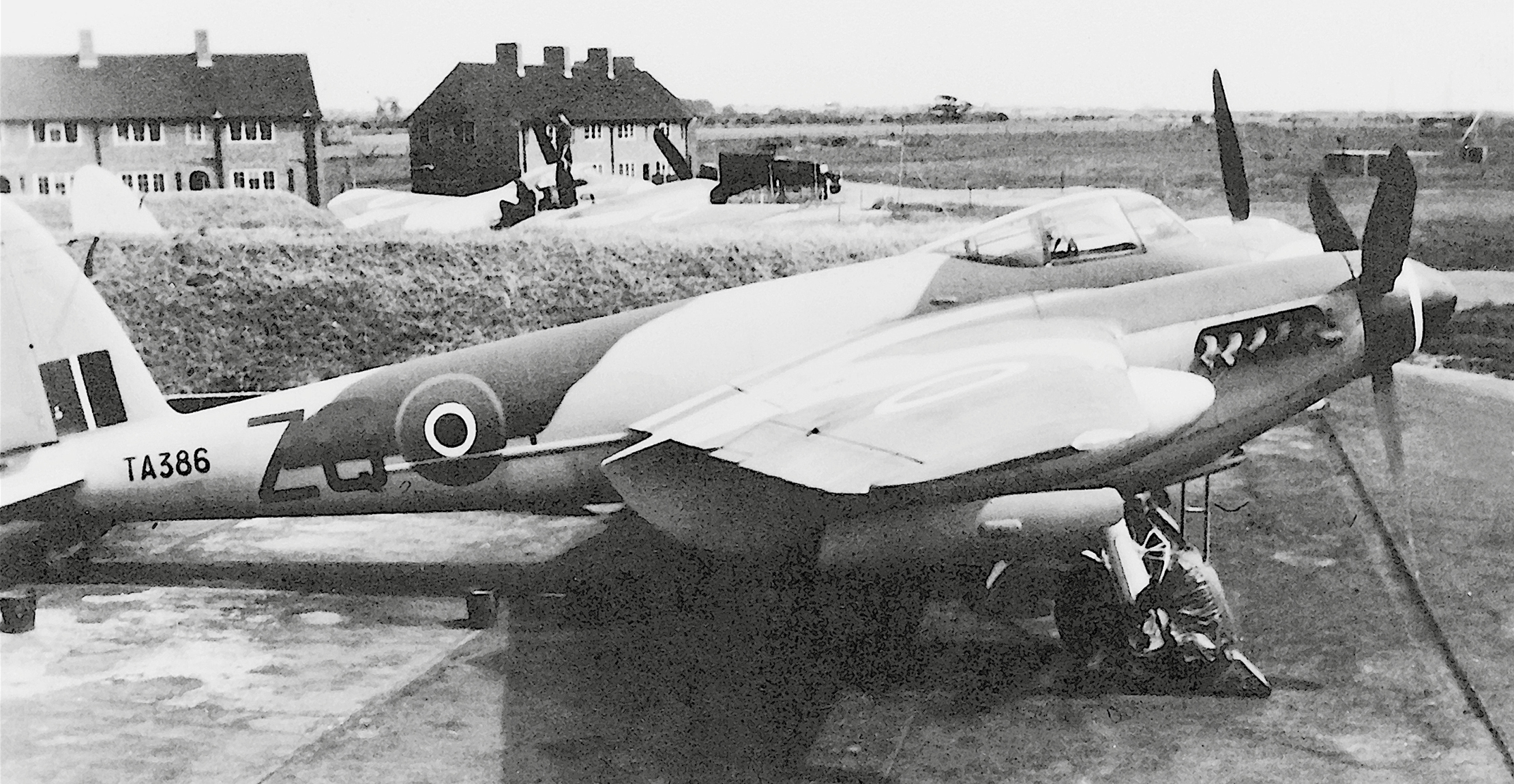
During the final months of the war in Europe the Mosquito VI intruders of the Fighter Experimental Flight patrolled enemy airfields at night from their airfield at Wittering. Flying TA386/ZQ-F on 22 March 1945, New Zealand intruder ace Flg Off Roy Lelong damaged three Me 262s parked at Neuburg airfield. TA386 survived only a matter of weeks after VE Day, the Mosquito being damaged beyond repair when it swung on takeoff and lost its undercarriage in an accident at Y9 Dijon on 19 June 1945 (Robert Forsyth collection)
The tactical fighters based on the Continent also continued to see action against Luftwaffe jets through March as Allied troops closed on the Rhine. During an early patrol on the 2nd Flt Lt Danny Reid of No 41 Sqn caught an Ar 234 near Nijmegen in his Spitfire XIV;
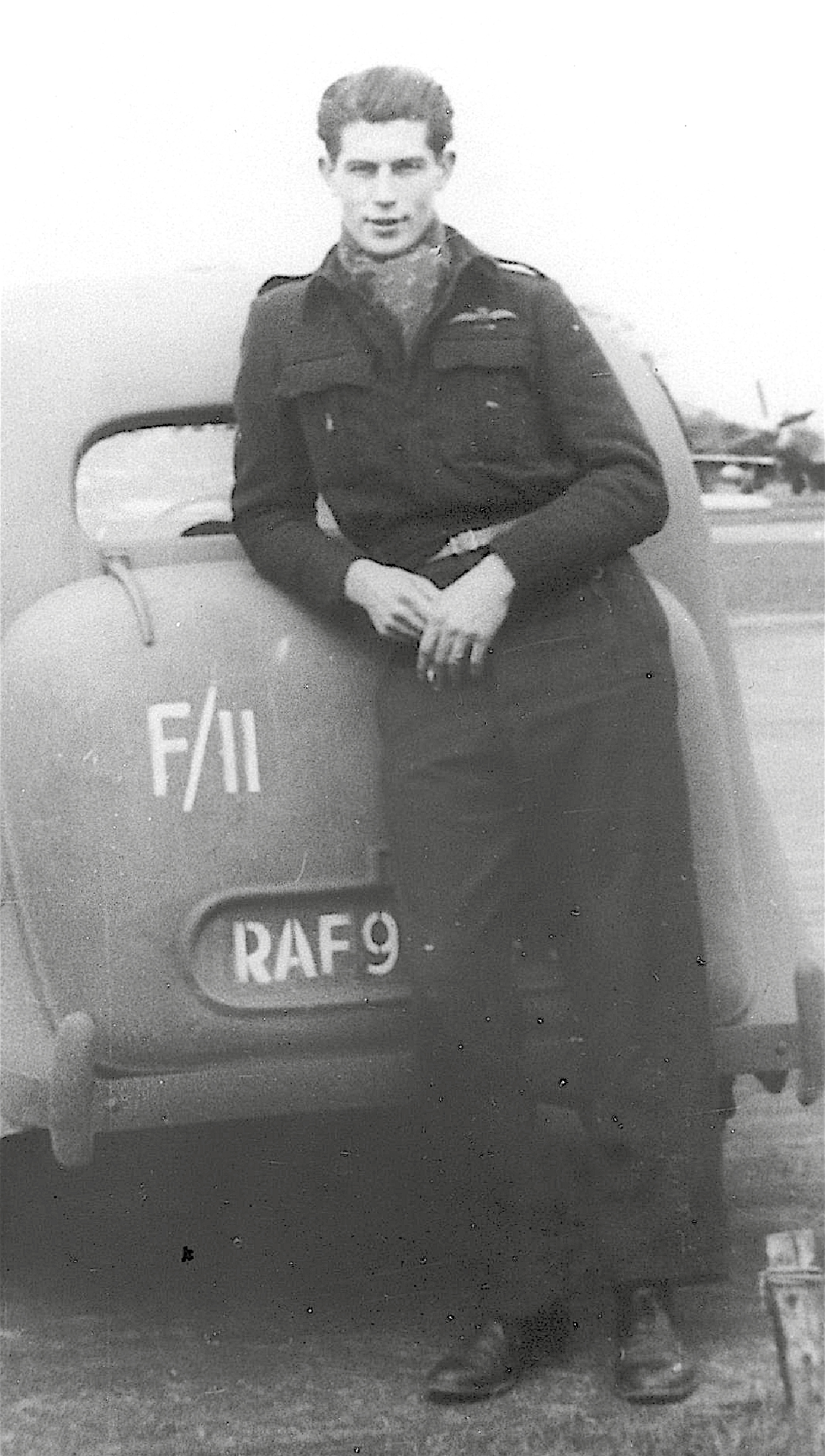
The first of only two Me 163s shot down by an RAF aircraft fell on 10 April 1945 to Flg Off John ‘Slops’ Haslope, who was flying a Mustang from No 165 Sqn at the time (Chris Goss collection)
‘I closed to 100 yards or less, firing with 0.50-in machine guns and cannon whilst still overtaking. I saw strikes on the port wing, jet engine and fuselage. I continued firing and saw flashes in the smoke, breaking away and being hit in the port radiator by debris. I next saw the enemy aircraft going down in a wide spiral, with white smoke pouring from holes all along the port wing, and dark smoke from the fuselage. A large piece of the enemy aircraft suddenly flew off, and one person bailed out, parachute opening. The enemy aircraft steepened its dive and crashed somewhere near Enschede.’
Soon afterwards a Tempest V patrol from No 222 Sqn spotted a pair of Ar 234s, as Flt Lt George Varley described;
‘I dived and turned to port, closing to 1000 yards before firing a one-second burst with ten-degree deflection. Looking down and around, I saw another jet plane flying below in the other direction. I closed to 200 yards and fired a two-second burst dead astern, and a huge explosion with red flame occurred.’
Varley’s victim was a jet from 9./KG 76 flown by Leutnant Eberhard Rogle, whilst the other aircraft he fired on and claimed as damaged in fact crash-landed and was written off. Varley ended the war with four victories to his name.
On 12 March Flt Lt Len Watt of No 401 Sqn claimed his first victory when, on a patrol over the Rhine, he spotted an Me 262 at 2500 ft just west of Wesel. Positioning himself astern of the jet, he fired two bursts and saw it ‘issue smoke and go down’. His victory was later confirmed. The following day Flg Off Howard Nicholson claimed the first jet victory credited to Spitfire XIV-equipped No 402 Sqn when he shot down an Ar 234, another of which fell to No 222 Sqn Tempest Vs on the 14th.
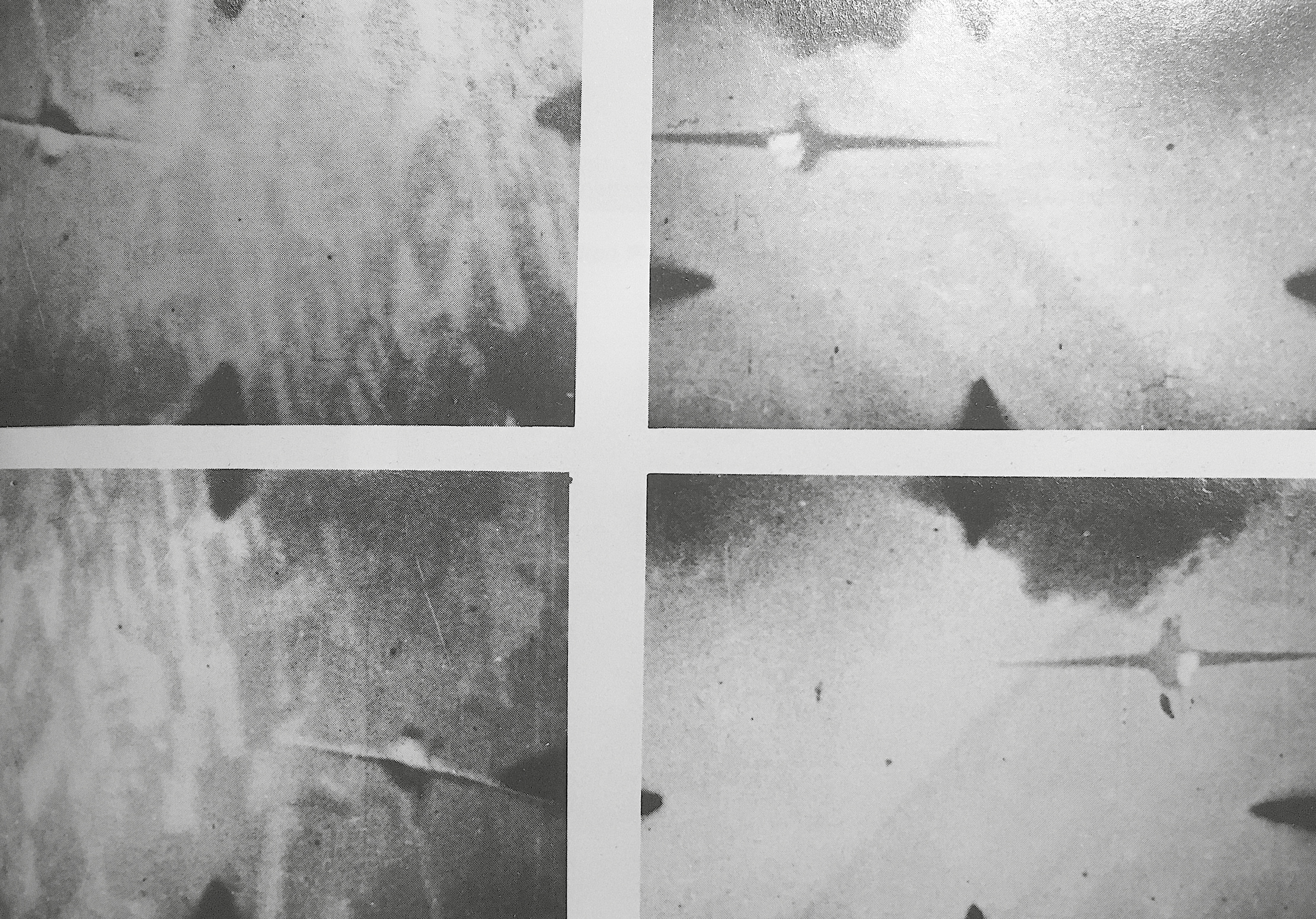
Four frames taken from the gun camera film exposed by ‘Slops’ Haslope when he downed his Me 163 on 10 April. The Komet proved to be Haslope’s only aerial success (No 165 Sqn Records)
It was almost a month before the next 2nd TAF jet victory. On 10 April Flt Lt Tony Gaze, now with No 41 Sqn, chased an Ar 234 but the jet outpaced him and he then had to avoid a patrol of Fw 190s. However, two days, later he had better luck when on patrol with Flt Lt Derek Rake, who recounted the highlights of the mission to Andrew Thomas;
‘Tony was leading the flight. We came out on top at around 20,000 ft, and as we levelled out, I recall seeing what I recognised as an Arado 234 twin jet break cloud to port ahead of us and below. I was in the near perfect position for a quarter attack. My Spit, a XIVE, was fitted with a gyro gunsight with a ranging twist grip on the throttle. As I dived towards the target I was able to position the jet within the diamond markers on the gunsight, thus having the correct range and deflection to open fire. My opening burst hit the starboard engine and it was smoking as it rolled over and dived towards the cloud. I got in one or two more bursts as I followed it down. I believe that I claimed the “kill”, but I think that Tony must have had a share in finishing it off.’
Jet victories were then regularly claimed, and on 14 April No 41 Sqn’s ace CO Sqn Ldr John Shepherd was near Nordholz airfield when he spotted two aircraft;
‘I recognised them as an ME 163 being towed by a ME 110. I was closing very rapidly but managed to get a short burst in on the ME 110, obtaining strikes on the port engine and cockpit. The 110 went into a left-hand diving turn, turned over on to its back and crashed into a field, bursting into flames. The 163 appeared to break away from the 110 and make a wide left-hand turn, finally diving straight in about three fields away from the 110.’
Shepherd was credited with both destroyed. The following day Flt Lts Jim McCairns and Neill Cox of No 56 Sqn were patrolling over the rapidly shrinking area of enemy-held territory when, north of Hamburg, they spotted a jet that they identified as an Me 262, but which was in fact an Ar 234, taking off from Kaltenkirchen. Cox’s Combat Report for the subsequent action, which gave him ace status, read as follows;
‘After Yellow Leader’s last attack, the enemy aircraft was making a gradual turn to port and I closed in astern to 200 yards, closing to 75 yards and firing all the time, allowing five-ten degrees of deflection. I saw strikes on the fuselage, wing roots and starboard power unit. The enemy aircraft began to turn more steeply, before striking a house and bursting into flames.’
On 17 April, in a solo attack on Ludwigslust, No 401 Sqn’s Flt Lt Johnny MacKay attacked aircraft in the face of heavy flak and damaged three Ar 234s. Two days later over Schleswig-Holstein during an armed reconnaissance, Flt Lt Tony Gaze’s section chased an Me 262 that was apparently leading what they initially identified as a V1 flying bomb ‘in formation’. However, it was subsequently assessed that this was probably one of the new He 162s that were based at Leck, making it one of the very few encounters that the RAF had with the Volksjäger. That same day, in the same area, No 222 Sqn almost certainly engaged another He 162, as Flt Lt Geoffrey Walkington described;
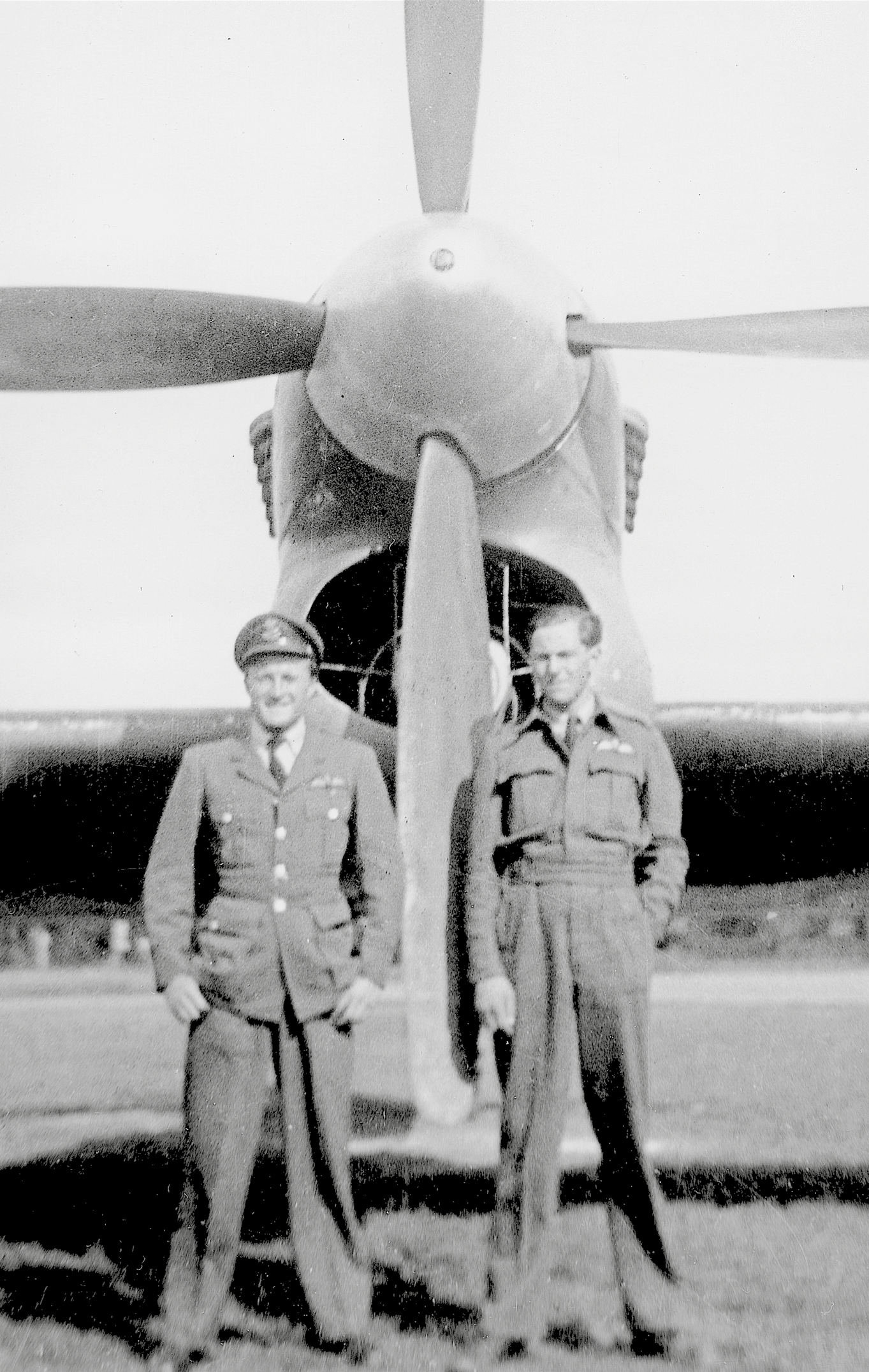
Tempest V pilot Flg Off Geoffrey Walkington of No 222 Sqn (right) claimed ‘one unidentified enemy aircraft destroyed’ that he described as having ‘twin fins and rudders and one engine’ over Husum on 19 April 1945. It is possible that his victim was Fahnenjunker-Feldwebel Günther Kirchner of 3./JG 1. If this was indeed the case, Walkington had shot down the only He 162 credited to the Allies (Chris Thomas collection)
‘I immediately broke off my attack on the airfield and chased this aircraft, which was camouflaged mottled green with a yellow underside and appeared to have twin fins and rudders and one engine. The nose of the aircraft had a drooping appearance and the wings (plan view) resembled those of a Me 109. Due to my loss of speed on turning, the enemy aircraft pulled away to about 1500 yards. Having now recognised this aircraft as hostile by its camouflage, I gave chase, but was unable to close, my IAS [indicated airspeed] being 350 mph. The enemy aircraft did a 360-degree turn to starboard, which I followed, turning inside. During my turn I managed to close to 1000 yards.
‘Being unable to gain further I trimmed my aircraft carefully, and allowing about three-quarters of a ring above the enemy aircraft, I fired short bursts. The enemy aircraft then pulled up through cloud, which was eight-tenths at 3000 ft. I followed through a gap and passed the enemy aircraft spinning down out of control from about 3500 ft. I then watched the enemy aircraft explode on the ground near Husum aerodrome. The enemy aircraft burned for about 30 seconds, emitting flames and thick black smoke, which, however, ceased completely at the end of the period. Claim one unidentified enemy aircraft destroyed.’
German accounts concur with this report, and it is possible that Walkington’s victim was Fahnenjunker-Feldwebel Günther Kirchner of I./JG 1.
By now Allied fighters were roaming at will over the shrinking Reich, and on 25 April No 41 Sqn’s Spitfire XIVs and No 486 Sqn’s Tempest Vs attacked Lübeck. No 41 Sqn’s Flt Lt Peter Cowell caught some Me 262s over the Ratzenburger See, shooting one down and damaging a second. Unusually, No 486 Sqn’s section was attacked by some Me 262s, but the pilots involved soon turned the tables and gave chase after the jets. Approaching Lübeck, V1 ace Flg Off Keith Smith finally got his chance;
‘I went down to attack and observed the 262 to have its wheels down. The enemy aircraft spotted me and broke sharply to port. I opened fire from 800 yards with two rings deflection, and following in the turn held my fire down to zero yards. I overshot, pulled up sharply and came down on him, opening fire from 400 yards with a half-ring deflection. The 262 was now at 50 ft over the runway. As it touched down I saw the starboard wing touch the runway and white smoke coming from the starboard unit. It slewed to starboard, and as I climbed away I saw smoke rising up to 200 ft and flames coming from the 262, which was now about 100 yards off the runway.’
Flt Lt Bill Stowe of Spitfire XIV-equipped No 130 Sqn also strafed an Me 262 as it lifted off from Lübeck, and the pilot bailed out as it crashed. He was only awarded a probable, however, although he ‘made ace’ on 30 April.
On 26 April Bremen fell, and that same day a section of No 263 Sqn’s Typhoons were bounced by Me 262s as they were landing at B111 Ahlhorn. The remaining fighters from the unit duly attacked one of the jets and brought it down. On the 29th the 21st Army Group crossed the Elbe with relative ease, and during the day one of the leading Canadian aces of World War 2 returned to action. Leading No 127 Wing, Wg Cdr James ‘Eddie’ Edwards was west of Hamburg when, as was described in his biography, ‘An aircraft popped out of a cloud. This time it was a brand new, and deadly, Messerschmitt 262 jet. As he was travelling very fast the Spitfires had no chance of catching him, so Eddie and his wingman fired at long range and saw hits on the fuselage. The jet kept going and disappeared into a cloud. The next day he got shots off at another Me 262, but it climbed away from them and easily escaped.’
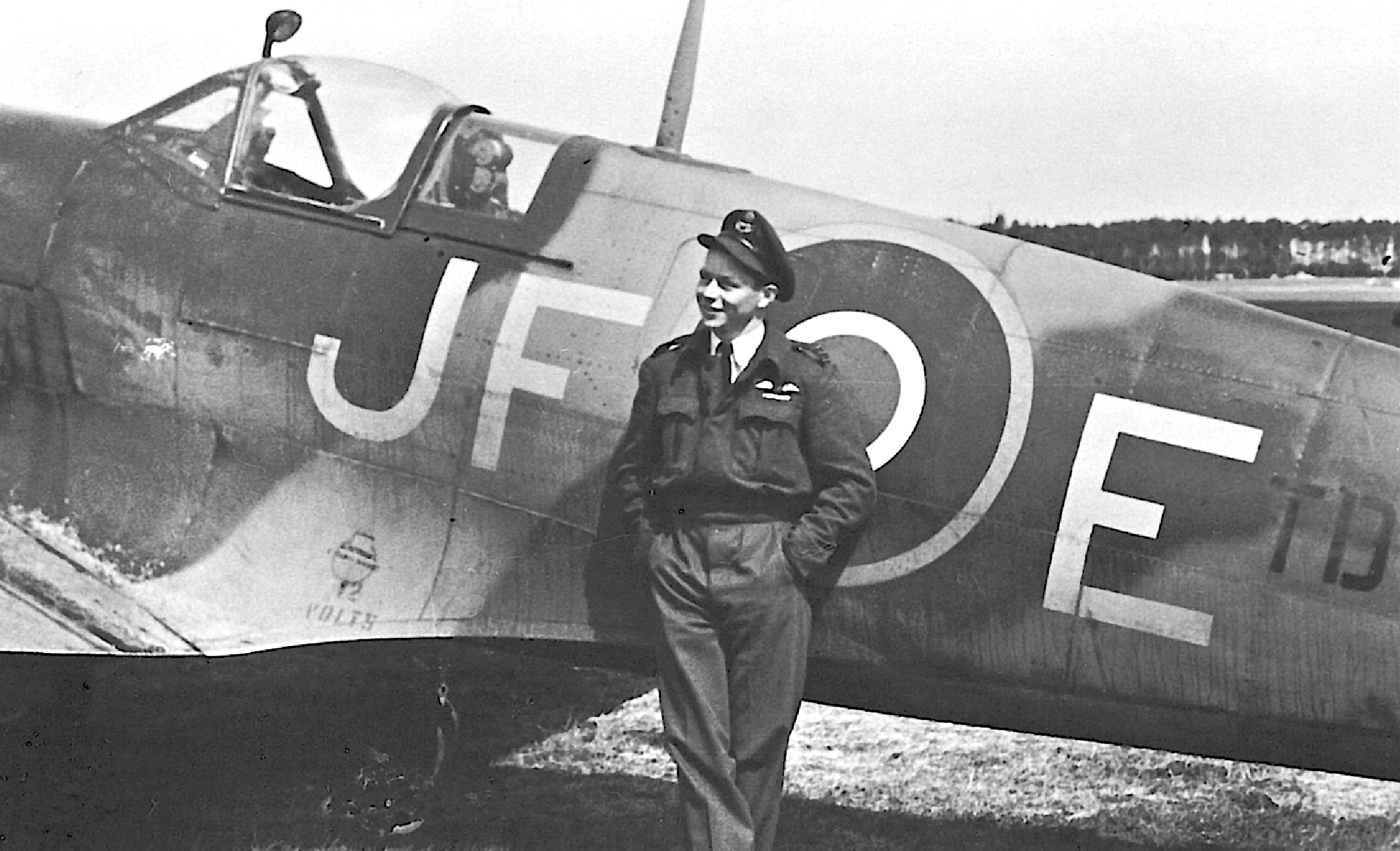
High-scoring ace Wg Cdr James ‘Eddie’ Edwards was leading No 127 Wing in his personal Spitfire XVI (TD147/JFE) on 29 April 1945 when he damaged an Fw 190 and an Me 262 (J F Edwards)
There was possibly one more encounter with jets during April, for on the 30th Leutnant Hans Rechenberg of II./JG 1 reported that he was shot at by a Spitfire while ferrying an He 162 from Rostock to Leck, forcing him to crash-land his Volksjager near Wismar. It is uncertain who shot him down, but it is possible that it may have been a pilot from No 412 Sqn, who claimed several Bf 109s in the same general area that evening.
By the beginning of May the Third Reich was almost finished, and on the evening of the 2nd Plt Off Des Watkins of the Belgian-manned No 350 Sqn was leading six Spitfire XIVs over Schleswig-Holstein when, west of Keil, they spotted an Ar 234 approaching Hohn airfield. The Welshman described how he became an ace;
‘I saw in the circuit of Hohn aerodrome a jet aircraft, which I identified as an Arado 234, going in to land. I dived from 8000 ft followed by the rest of the section, closed to within 50 yards behind the enemy aircraft and sprayed the mainplane and side of the fuselage with machine gun fire. I broke away to port as I saw the aircraft smoking.’
Others in Watkins’ section then finished off the last German jet to fall to the guns of the ‘King’s Men’, who, in all, had been credited with 37 jets destroyed. Of the pilots to make claims against a jet, 29 of them were aces.